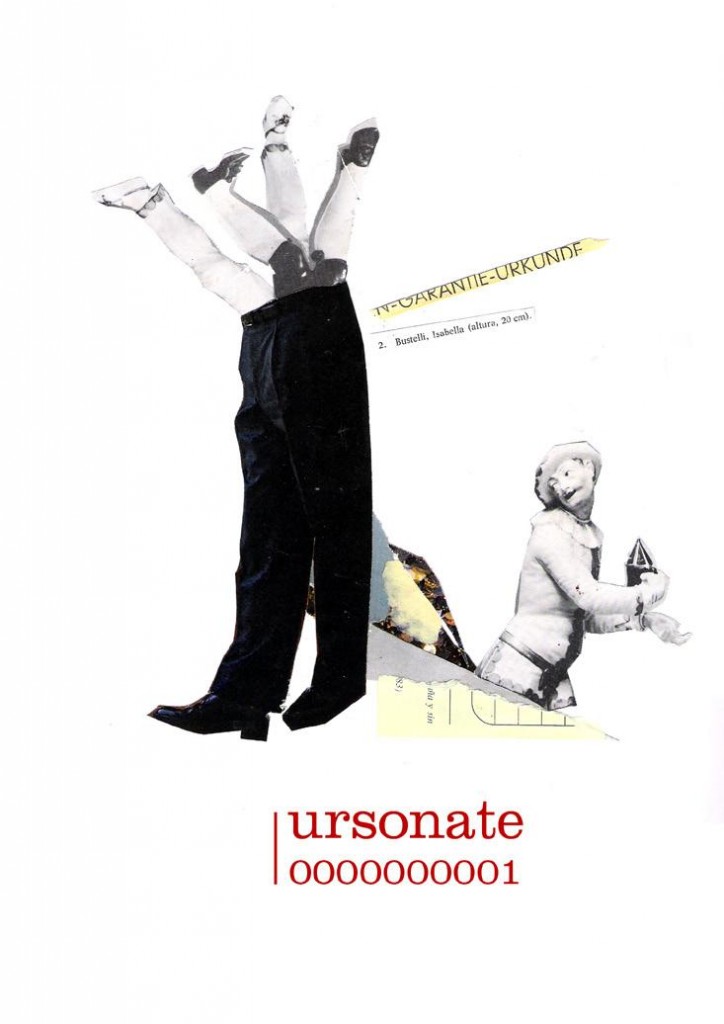Ursonate Fanzine, 1-2 (2010-2011) [Spanish]
Filed under magazine, sound recording | Tags: · listening, music, noise, sound, sound art

Nº000
Published in public domain, 2010
62 pages

Nº001
Coordinación: Jose Luis Espejo, Oscar Martín
Reseñas: Miguel Angel Tolosa
100 pages
Ursonate_Fanzine surge con la única pretensión de generar un organo más de expresión, encuentro y reflexión alrededor de la comunidad involucrada en el arte sonoro, el ruido y la escena de netlabels y labels independientes.
PDF (Nº000)
PDF (Nº001)
ZIP (Nº001, sound compilation Sound of Ebb)
Mark Nunes (ed.): Error: Glitch, Noise, and Jam in New Media Cultures (2010)
Filed under book | Tags: · botnet, error, facebook, glitch, hacktivism, machinima, media culture, new media, noise, tactical media, wikipedia, youtube

Divided into three sections, Error brings together established critics and emerging voices to offer a significant contribution to the field of new media studies. In the first section, “Hack,” contributors explore the ways in which errors, glitches, and failure provide opportunities for critical and aesthetic intervention within new media practices. In the second section, “Game,” they examine how errors allow for intentional and accidental co-opting of rules and protocols toward unintended ends. The final section, “Jam,” considers the role of error as both an inherent “counterstrategy” and a mode of tactical resistance within a network society. By offering a timely and novel exploration into the ways in which error and noise “slip through” in systems dominated by principles of efficiency and control, this collection provides a unique take on the ways in which information theory and new media technologies inform cultural practice.
Publisher Continuum International Publishing Group, 2010
ISBN 144112120X, 9781441121202
288 pages
Download (link removed by request from publisher)
Joanna Demers: Listening Through the Noise: The Aesthetics of Experimental Electronic Music (2010)
Filed under book | Tags: · aesthetics, electronic music, experimental music, listening, music, music history, noise, sound recording

“Contemporary electronic music has splintered into a dizzying assortment of genres and subgenres, communities and subcultures. Given the ideological differences among academic, popular and avant-garde electronic musicians, is it possible to derive an aesthetic theory that accounts for this variety? And is there even a place for aesthetics in twenty-first-century culture?
Listening through the Noise explores genres ranging from techno to electroacoustic music, from glitch to drone music, and from dub to drones, and maintains that culturally and historically informed aesthetic theory is not only possible but indispensable for understanding electronic music. The abilities of electronic music to use preexisting sounds and to create new sounds are widely known. Author Joanna Demers proceeds from this starting point to consider how electronic music is changing the way we listen not only to music, but to sound itself. The common trait among all variants of recent experimental electronic music is a concern with whether sound, in itself, bears meaning. The use in recent works of previously undesirable materials like noise, field recordings, and extremely quiet sounds has contributed to electronic music’s destruction of the “musical frame,” the conventions that used to set apart music from the outside world. In the void created by the disappearance of the musical frame, different philosophies for listening have emerged. Some electronic music genres insist upon the inscrutability and abstraction of sound. Others maintain that sound functions as a sign pointing to concepts or places beyond the work. But all share an approach towards listening that departs fundamentally from the expectations that have governed music listening in the West for the previous five centuries.”
Publisher Oxford University Press, 2010
ISBN 0195387651, 9780195387650
248 pages
PDF (updated on 2012-8-3)
Comment (1)
